No products in the cart.
Victorian Parade helmet (88110)
English Victorian Copy, 1880,
Provenance
A Victorian copy of an original residing in the State Hermitage Museum, St Petersburg.
John Wigington, sold Parke-Bernet Galleries Inc., New York, 4 October 1951,
Provenance Victoria and Albert (V&A) Museum, London, inv no. 2922 John Wigington, sold Parke-Bernet Galleries Inc., New York, 4 October 1951,
Available for the discerning collector is this North Italian burgonet (parade helm). The electrotype was made by Elkington and Co Ltd of Birmingham from an original helmet that was at that time in the imperial collections of the Tsarkoe Selo near St Petersburg and is now in the State Hermitage Museum, St Petersburg, Acc. No, 3. 3420 (Gille & Rockstuhl 1835-53, pt. 7, pl. XXXIV; and Godoy 2003, No. 16, pp. 100-1 & 421). The piece has been dated to approximately 1880 CE.
The inspiration of the original appears to have been the slightly earlier work of the celebrated Negroli family armor makers. The helm itself is formed in one piece rising at its rear to a medial crest formed as a recumbent sphinx with a tubular plume-holder straddling its tail, projecting forwards to a slightly down-turned, obtusely-pointed integral peak at its rear to an outward-
flanged neck-guard, also obtusely pointed, and formed around its main edge with a boldly roped turn. Its surfaces are embossed in high relief with scrolling acanthus foliage and fruits involving at the front a classical warrior and a Medusa’s head (a classic image in every sense of the word and proof of the Negroli inspiriation). At each side are embossed male nudes and putti, and at the rear, herons grasping snakes in their beaks and a lion’s mask (worn in parts). Fitted internally over the left ear is the oval seal of the Elkington company bearing at its Center the royal cipher VR.
This burgonet stands 11 ½” high and would be best displayed on a stand as a conversation piece in a foyer or sitting room.
USD2,800.00



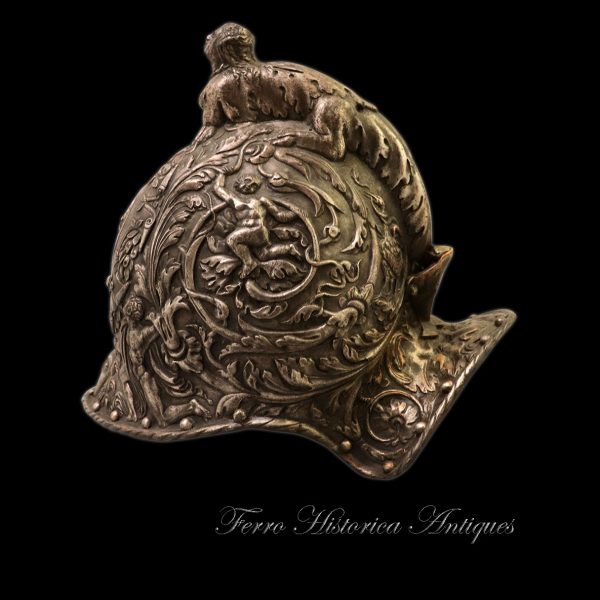
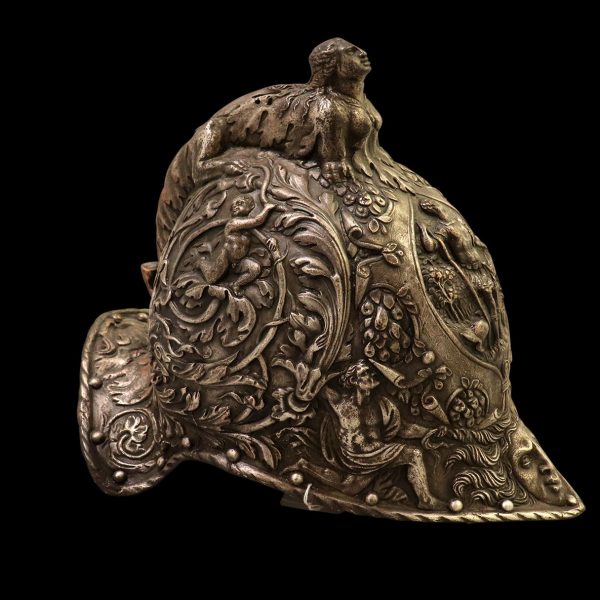
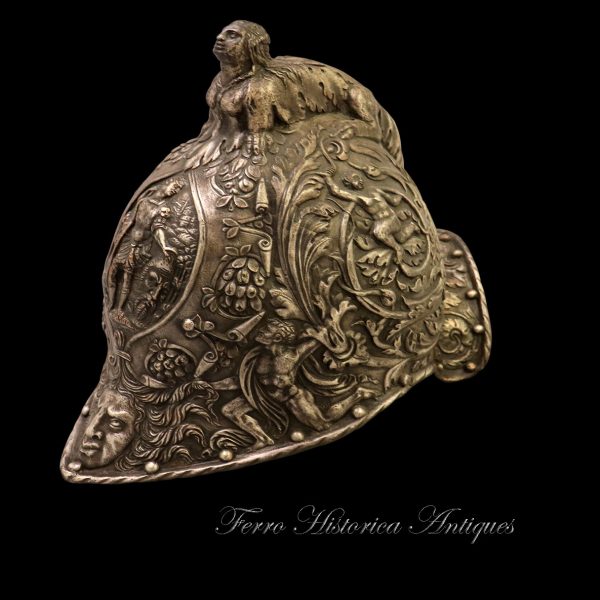
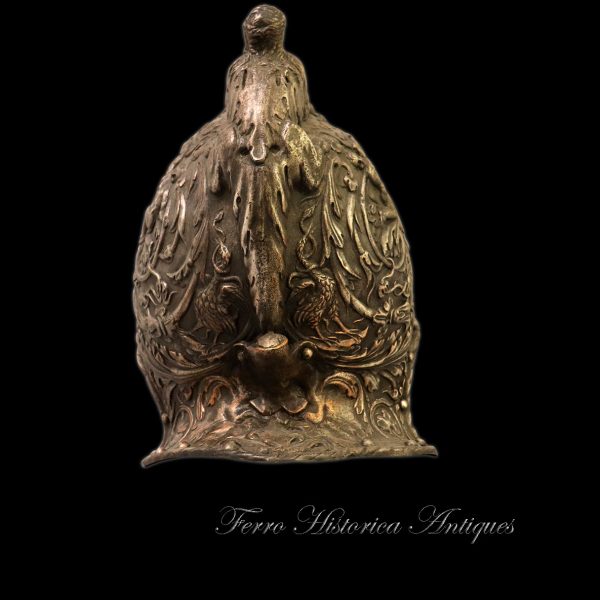
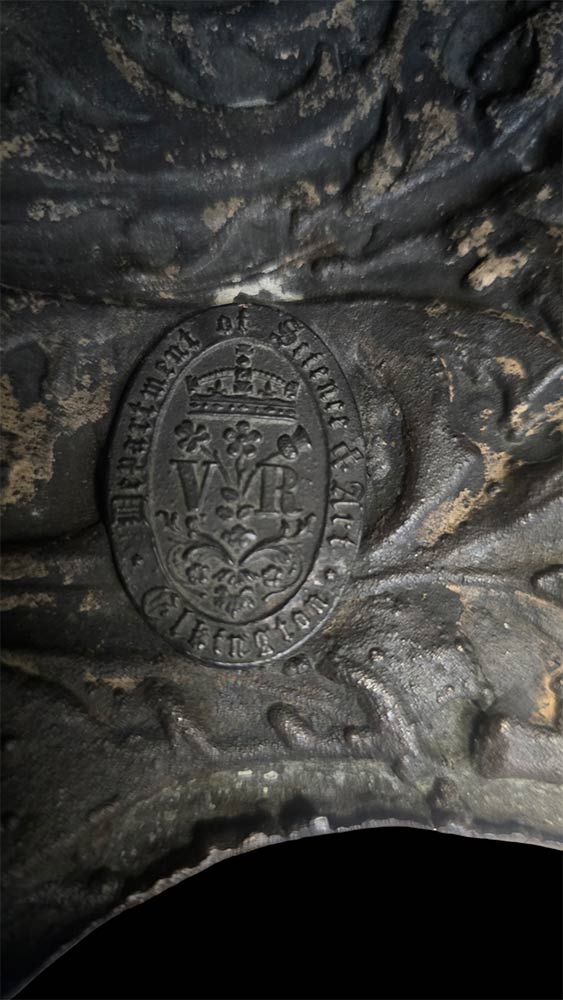
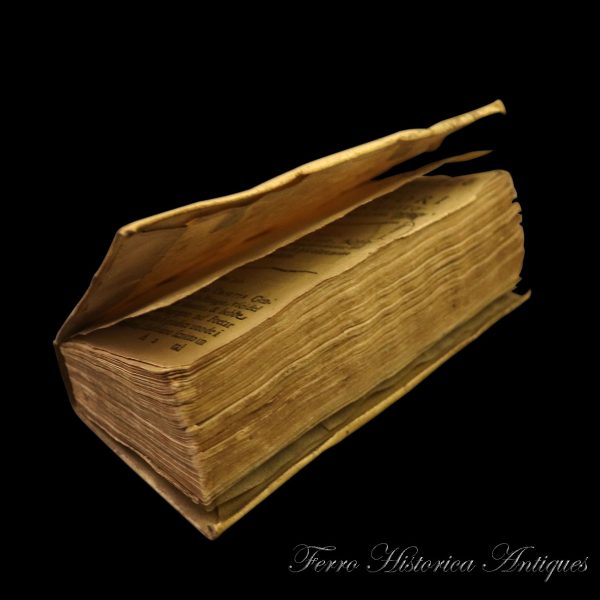
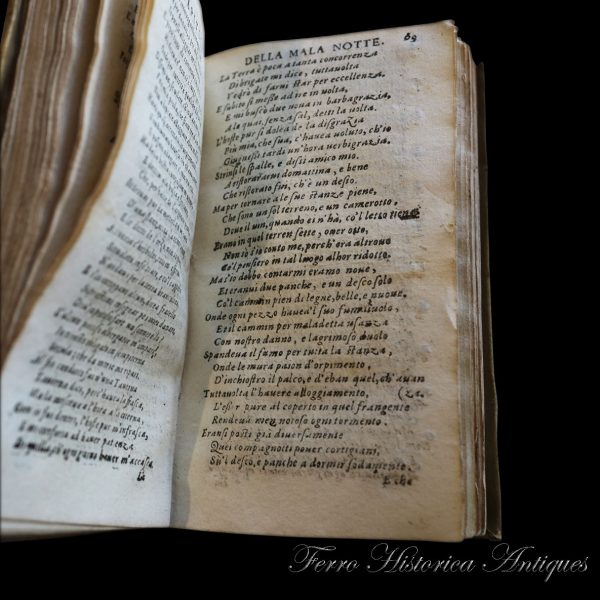
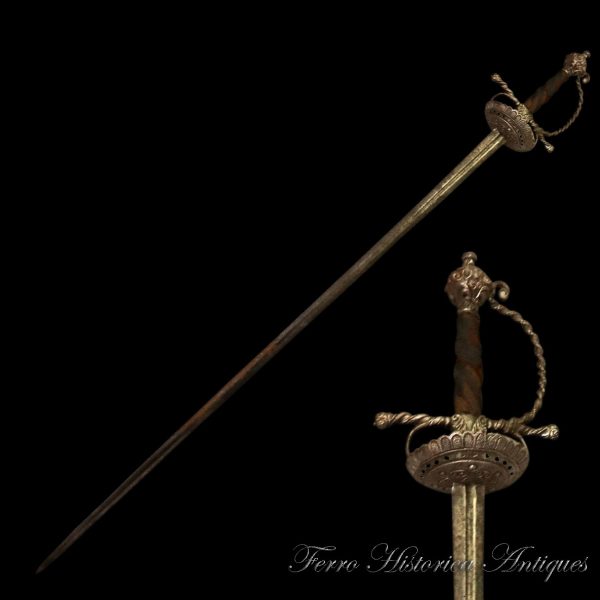
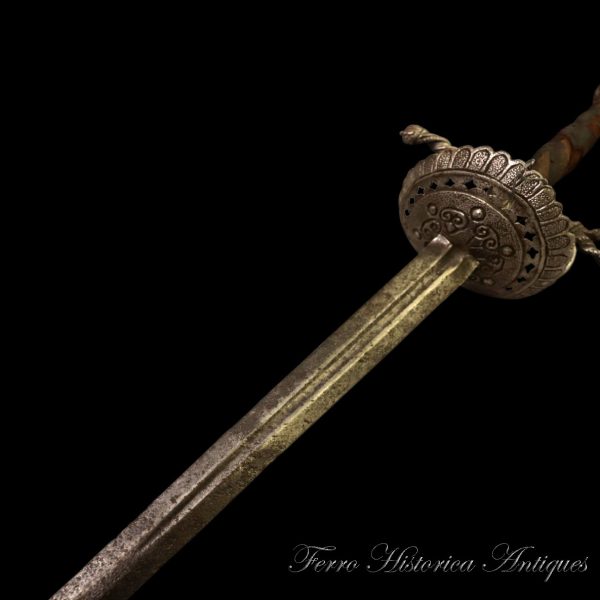
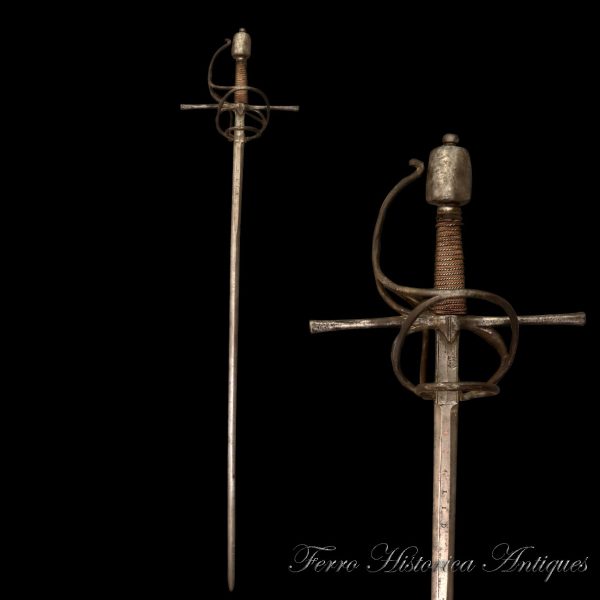
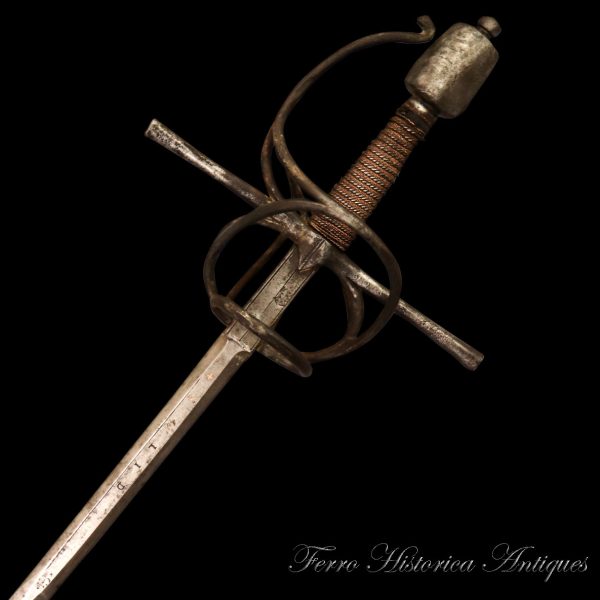

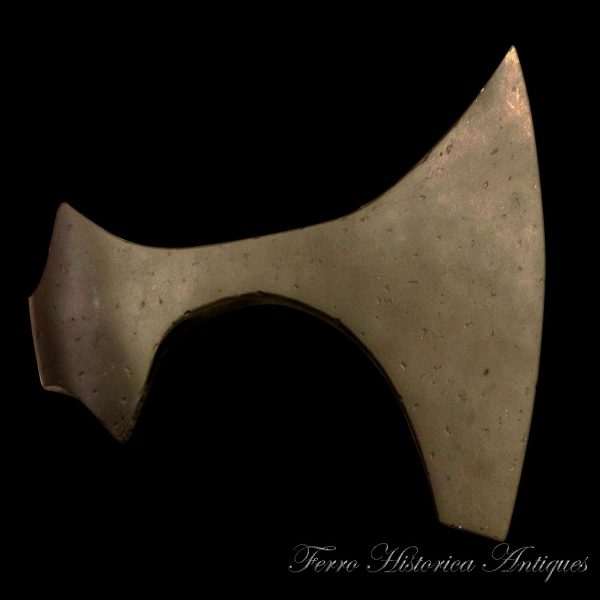
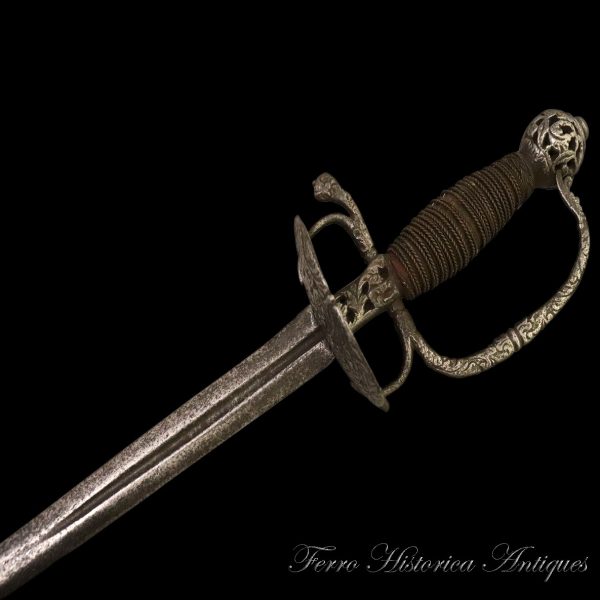

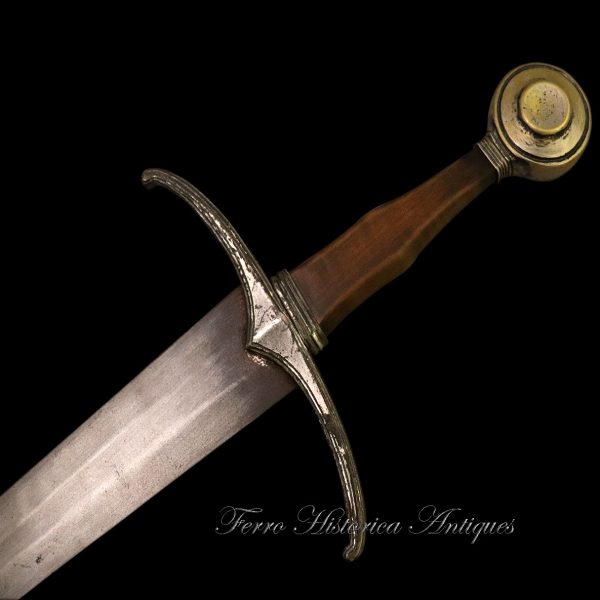

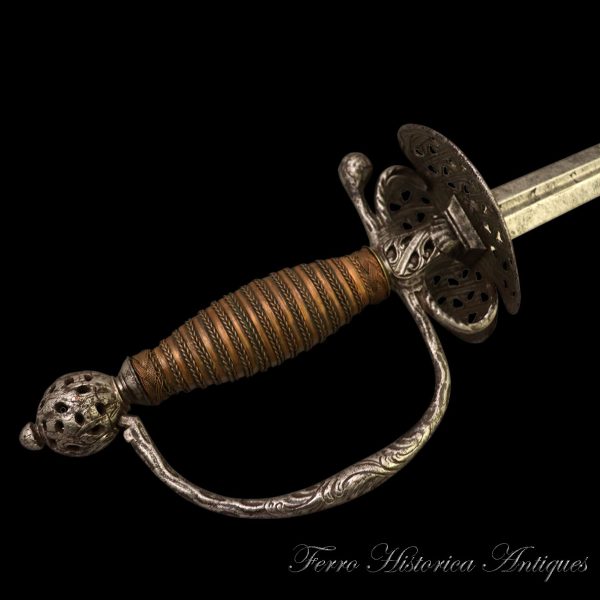
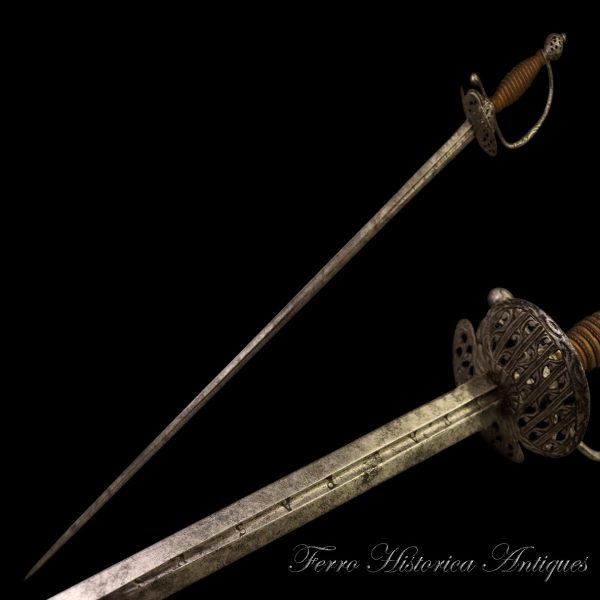
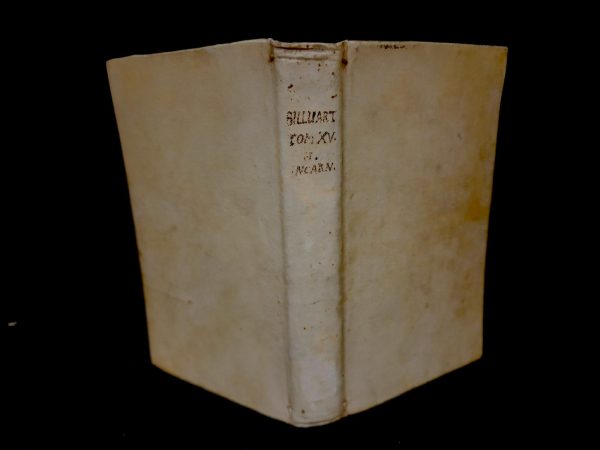
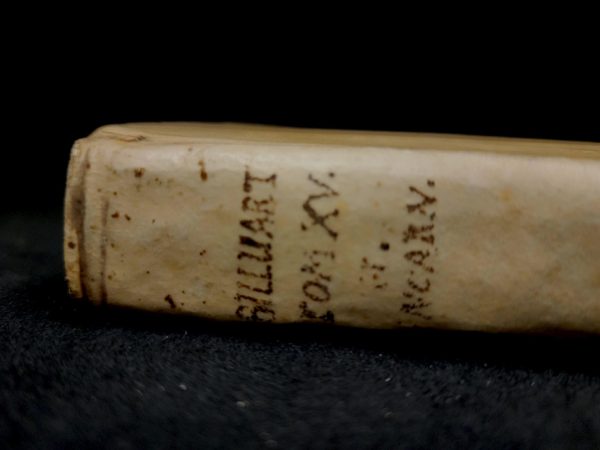
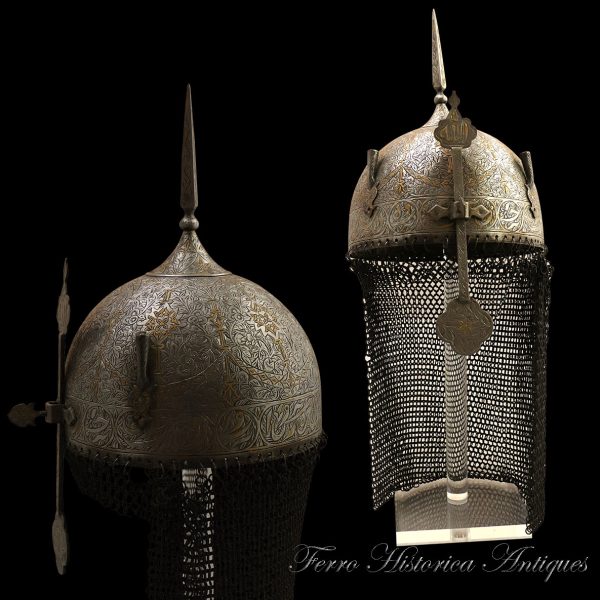
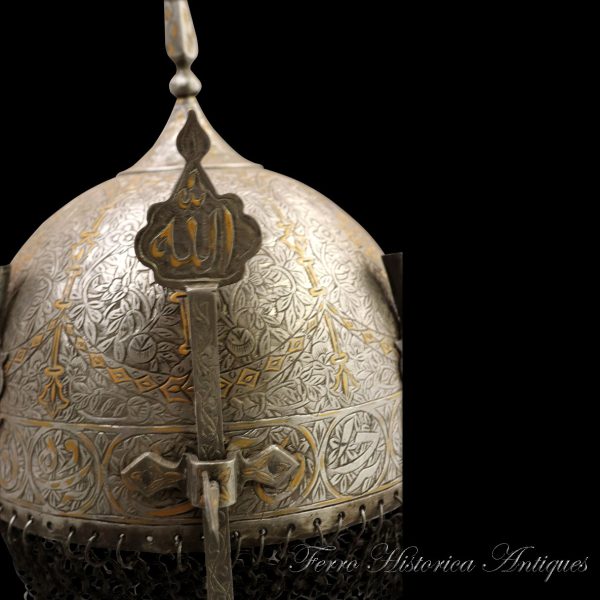
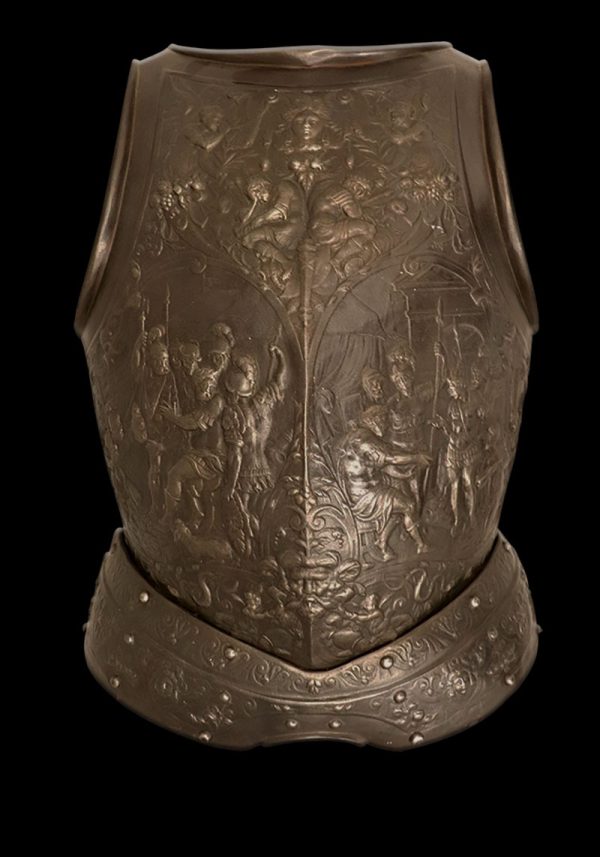
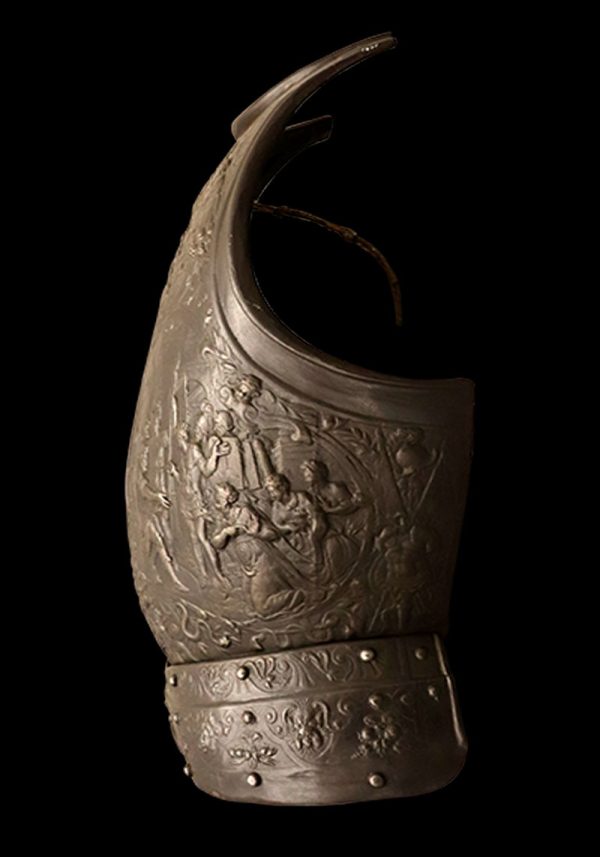
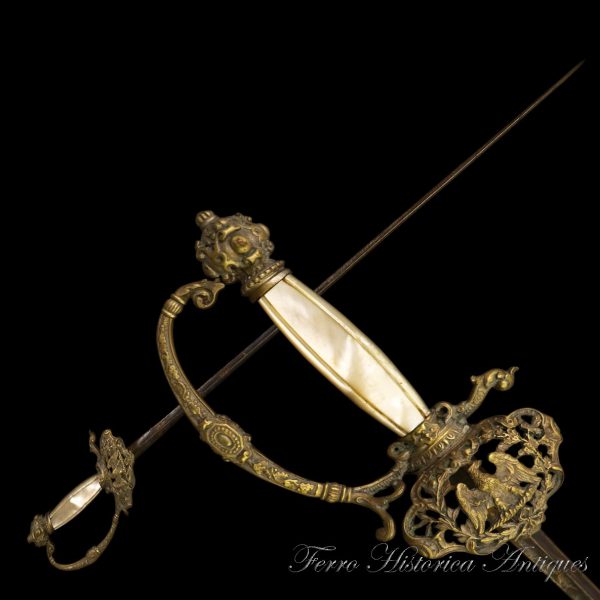
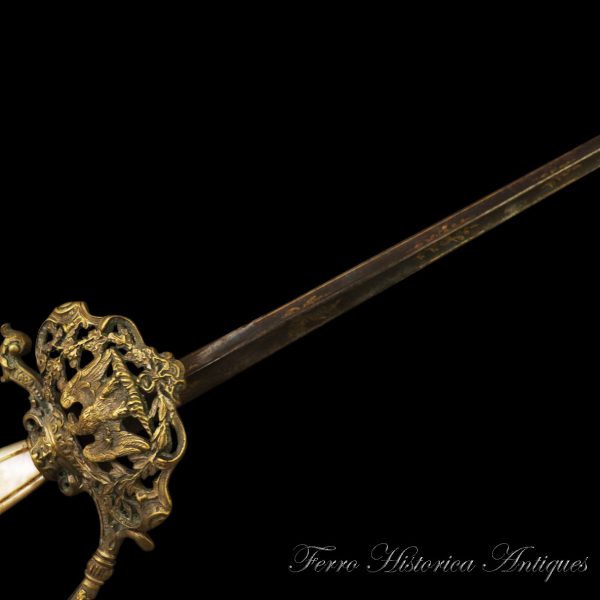
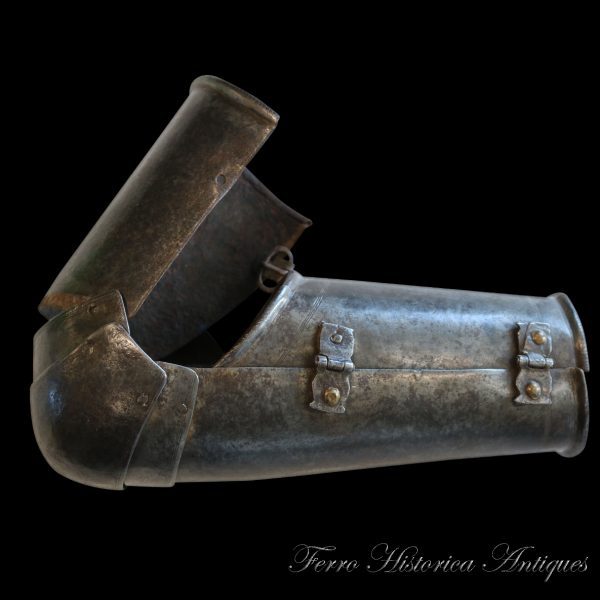
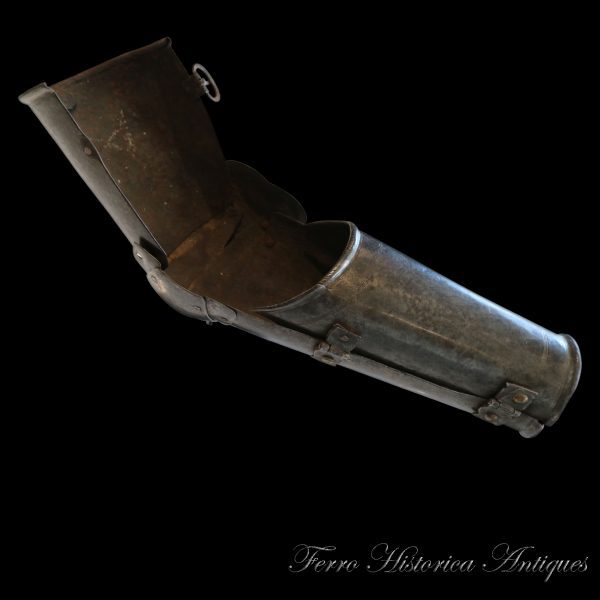
Reviews
There are no reviews yet.